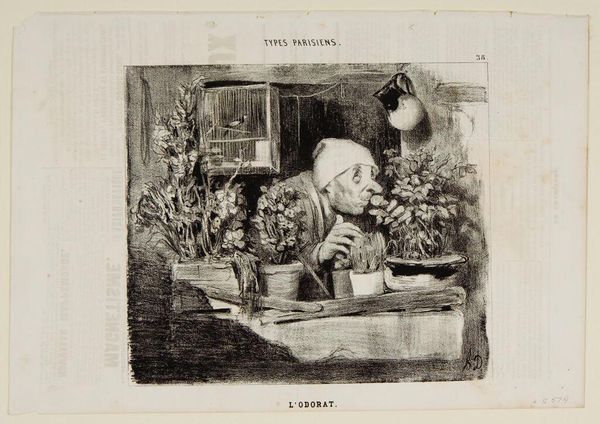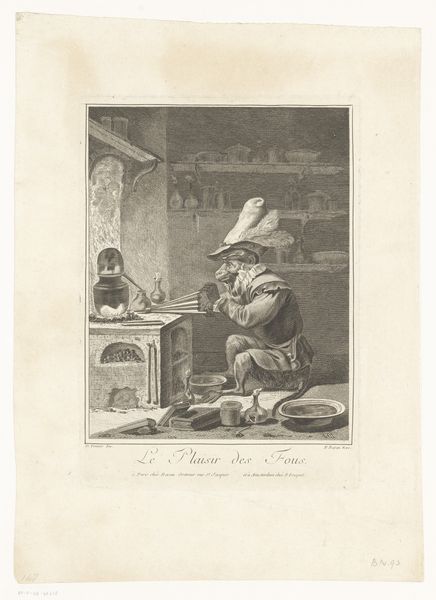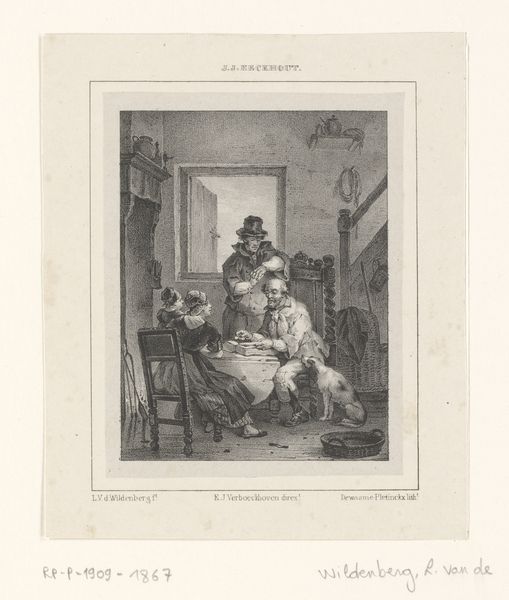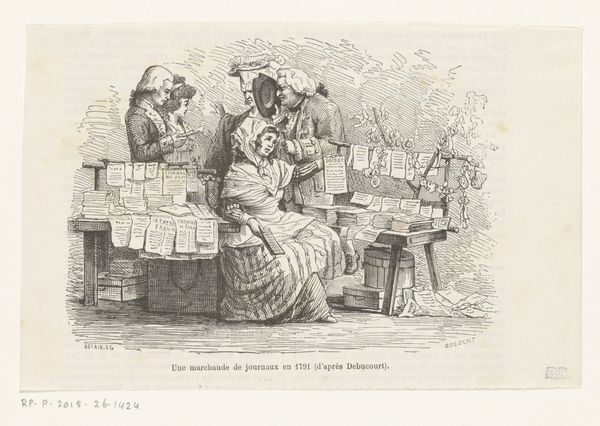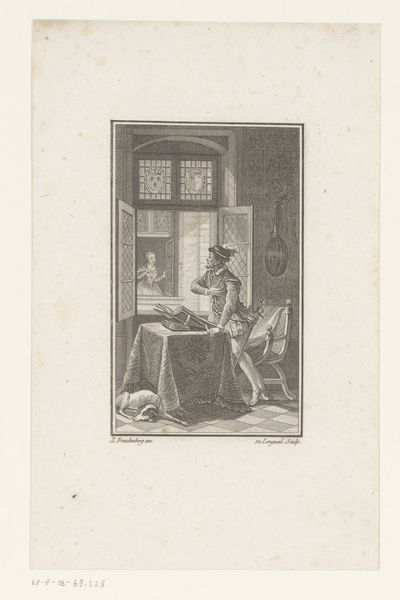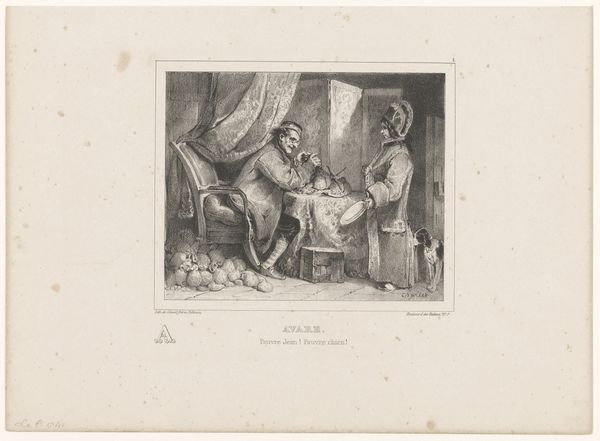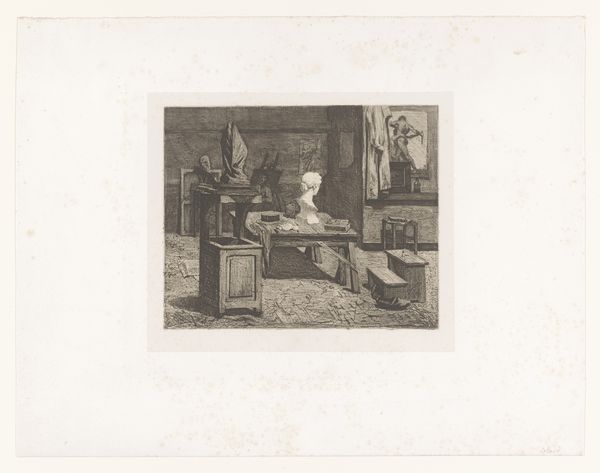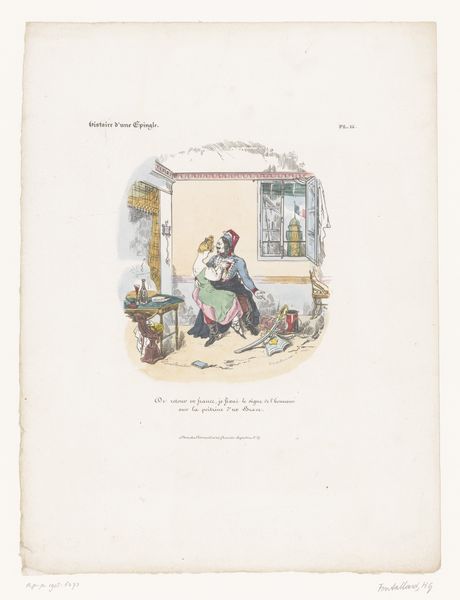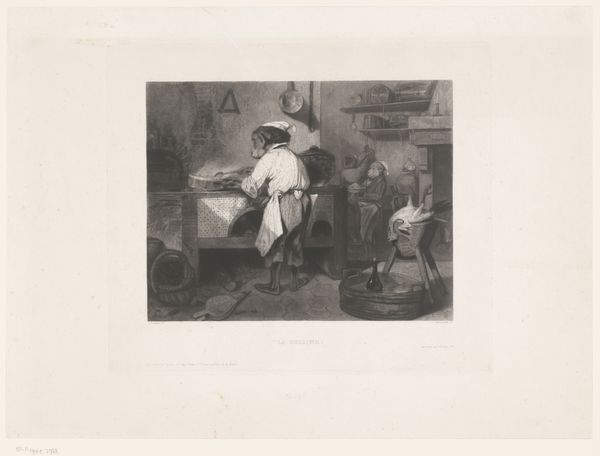
lithograph, print
#
portrait
#
lithograph
# print
#
caricature
#
pencil sketch
#
romanticism
#
genre-painting
#
realism
Dimensions: height 246 mm, width 325 mm
Copyright: Rijks Museum: Open Domain
Curator: Look at this lithograph, "Old Man Smelling a Rose on his Balcony" created in 1843 by Honoré Daumier, housed right here at the Rijksmuseum. Editor: My immediate impression is one of quiet observation. It feels both intimate and detached. Curator: Indeed. Daumier was a master of social commentary, using lithography, a fairly new and accessible printing technique at the time, to reach a broad audience with his satirical takes on Parisian life. Here, we see that his technique employs a stark use of light and shadow, achieved through the lithographic process. Editor: This image offers commentary on class and leisure. We are presented with this somewhat grotesque caricature of an elderly man seemingly engrossed in the simple pleasure of smelling a rose. Is this supposed to critique the bourgeoisie or simply humanize an aging man through accessible media? Curator: Interesting point. The context here is crucial; Daumier was very engaged with labor rights. Lithography offered the potential for widespread dissemination of images commenting on everyday labor conditions in Paris, at a scale previously unachievable with painting. This print then might represent leisure afforded by wealth or perhaps something aspired to, commenting on social inequality, with subtle indications such as the bird cage and carefully tended balcony flowers suggesting this aspiration towards leisure. Editor: But consider also the figure himself. He is not idealized; he's presented with wrinkles and a prominent nose, yet there is a gentle quality to him, almost vulnerable as he experiences this small moment of joy. How much can this representation speak about ideas concerning beauty and access? Is Daumier reflecting society’s increasing access to consumer goods? What are his assumptions about class? Curator: Perhaps, through this juxtaposition of caricature and human experience, Daumier questions societal values and norms regarding labor and class, highlighting contradictions between industrialization and the basic human longing for pleasure and ease. He pushes lithography beyond simple reproduction into an evocative art form. Editor: It’s in pieces like this one that art creates meaningful social narratives, questioning norms about class, and, thanks to Daumier’s choice of printing as his media, making a wide critique accessible. Curator: Ultimately, through examining his choice of lithography as a material, "Old Man Smelling a Rose" offers much deeper insights than the quaint domestic scene first suggests.
Comments
No comments
Be the first to comment and join the conversation on the ultimate creative platform.
